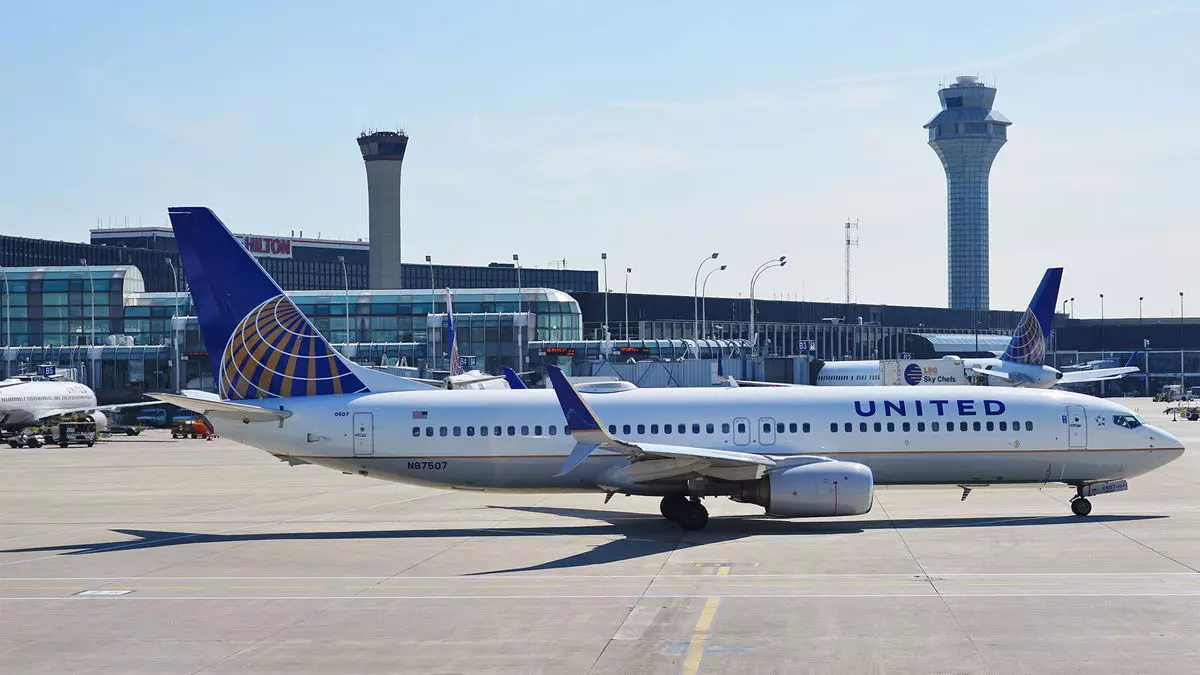The ongoing legal contest between American Airlines and the City of Chicago, along with United Airlines, is more than just a corporate dispute; it represents a potential reconfiguration of one of the busiest transportation hubs in the nation—Chicago O’Hare International Airport. In a highly competitive environment, the stakes regarding gate access could redefine airline domination, particularly as both United and American strive for supremacy in a market that has profoundly shifted since the pandemic. As the city’s decision to redistribute gate space inches closer, the outcome may not only impact velocity and service offerings but also signal a long-term shift in market dynamics.
O’Hare is currently the fourth busiest airport in America, serving countless passengers each day. United Airlines utilizes 90 gates, while American Airlines operates from 71. The proposed redistribution could result in United gaining several gates, further consolidating its position against American, which has been struggling to keep pace following the pandemic. American’s lawsuit, filed on May 2, serves as a protest against what it claims is an unfair acceleration of changes that disadvantage them.
Understanding the Legal Quagmire
At the heart of American’s case lies a complex legal argument regarding the timing of the gate reassessment process initiated by the Chicago Department of Aviation. American alleges that this assessment was commenced prematurely, flouting a lease agreement that was struck during negotiations in 2018—far before the chaos brought upon by COVID-19. This lease was foundational in dictating how airlines would be allowed to expand at the airport, especially after American insisted on the expedited construction of additional common-use gates known as L-Stinger gates.
The core contention revolves around the timing—the lease stipulated a one-year window for American to ramp up utilization of these new gates before any reallocation assessment could occur. However, an ambiguity surrounding the completion of certain Terminal 5 expansions appears to have been seized upon to initiate the redistributions sooner than expected. The legal battle is emblematic of the growing tensions between logistics and operational frameworks within which airlines operate.
Market Dynamics and Competitive Pressure
The ramifications of this conflict are profound. Brett Snyder, a noted airline analyst, suggests that a potential shift of gates in favor of United near to the height of O’Hare’s summer travel season could solidify United’s already strong positioning. The airline has rebounded significantly from pandemic losses, scrolling a seat count lead over American Airlines that grew from 9.3 million in 2019 to an impressive 13 million by 2024. Snyder’s analysis indicates that if United were to secure a net gain of ten gates, this would hamper American’s efforts to regain its foothold.
However, lest one think that American could merely bow out, it is essential to note that the airline too has been ramping up its operational capacities at O’Hare, boosting its summer schedule by 20.9% year-on-year in an attempt to regain advantage. Although American trails United in operational metrics, it is actively engaging in growth tactics that indicate a willingness to remain in the race. Snyder mentions that while American may consider re-evaluating its pursuit of further dominance at O’Hare, it is locked in a struggle that is indicative of larger pressures within the airline industry.
The Power of Brand Loyalty
United Airlines has been vocal about its growing strength in securing brand-loyal customers, a crucial factor in the highly competitive aviation landscape. The yield—the revenue generated per passenger mile—serves as a critical metric. In the last quarter of 2024, United’s yield outperformed American’s by approximately 13%, adding fuel to the argument that United’s market position is only set to strengthen as it captures a larger share of O’Hare’s passenger traffic.
For American Airlines, the road ahead appears fraught with uncertainty, as the legal proceedings could very well determine whether they can maintain their foothold at this pivotal airport. Beyond just gate allocations, this battle reflects broader themes of strategic positioning and operational efficacy in a post-pandemic world where consumer expectations and airline performance are in constant flux.
As the deadline for a final determination approaches, the airline industry and passengers alike will be closely monitoring how this gate distribution saga unfolds. The resolution will not only influence immediate operational strategies but could also set the stage for long-term shifts in the competitive landscape of one of America’s most critical airports.


Leave a Reply